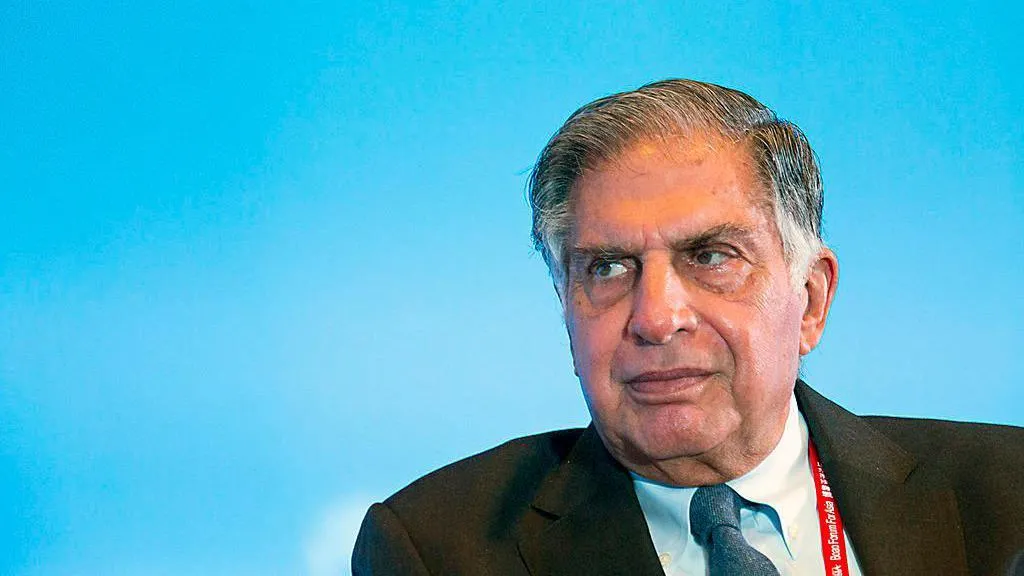Ratan Tata’s remains will lie in state at Mumbai’s National Centre for Performing Arts (NCPA) in Nariman Point today from 10 am to 4 pm, allowing the public to pay their final respects.

Mumbai: Ratan Tata, the iconic business leader who passed away at 86 in a Mumbai hospital on Wednesday, will be cremated with full state honors. Maharashtra Chief Minister Eknath Shinde declared Thursday a day of mourning to pay tribute to the revered industrialist and philanthropist.
As a tribute, the national flag will be flown at half-mast across government offices in Maharashtra, with many Thursday events being cancelled.
Ratan Tata’s body will lie in state at the National Centre for Performing Arts (NCPA) in Mumbai’s Nariman Point from 10 am to 4 pm today, offering the public a chance to pay their final respects. The cremation is set to take place later in the day in the Worli area. Home Minister Amit Shah will be present at the funeral, while Prime Minister Narendra Modi travels to Laos for the ASEAN-India and East Asia summits.
Ratan Tata’s passing signals the close of a transformative chapter in Indian business, where one man redefined the nation’s industrial landscape, elevating his family-run conglomerate into a global force.
Despite overseeing more than 30 companies across 100 countries on six continents, Mr. Tata led a modest life. His immense influence and achievements never placed him on billionaire lists, as he remained a symbol of humility, integrity, and quiet dignity throughout his career.
When and where was Ratan Tata born?
Born on December 28, 1937, in Mumbai, Ratan Tata came from one of India’s most distinguished business dynasties. He was the great-grandson of Jamsetji Tata, the visionary who founded Tata Group in 1868 as a small trading firm, which eventually evolved into a vast conglomerate spanning industries like steel, salt, automobiles, software, and aviation.
Ratan Tata’s early life was influenced by both privilege and challenges. After his parents’ separation during his childhood, he was brought up by his grandmother, Lady Navajbai Tata. He first attended the renowned Cathedral and John Connon School in Mumbai before pursuing higher education in the United States. In 1962, he graduated from Cornell University with a Bachelor of Science degree in Architecture.
Ratan Tata later completed the Advanced Management Program at Harvard Business School, but his aspirations to pursue a career in architecture shifted when he returned to India in the early 1960s to join the family business.
He began his journey by working on the shop floor at Tata Steel’s Jamshedpur plant, a hands-on experience that deeply influenced his future leadership style, emphasizing practical learning and engagement with every level of the organization.
What challenges did Ratan Tata face while trying to improve Nelco’s performance?
In 1971, Ratan Tata was appointed director-in-charge of the National Radio and Electronics Company (Nelco), a struggling subsidiary of the Tata Group. Despite his dedicated efforts, he was unable to reverse the company’s declining fortunes amid the challenging economic climate of the 1970s.
In 1991, Mr. Tata succeeded his illustrious uncle, J.R.D. Tata, as chairman of the Tata Group. J.R.D., who had steered the conglomerate for over 50 years, was an iconic leader, and Mr. Tata encountered skepticism both within the organization and beyond. However, he quickly set out to silence his critics.
That same year marked a significant shift for India as the nation opened its economy through liberalization, stepping away from protectionist policies. Mr. Tata seized this pivotal moment to guide the Tata Group into a new era, championing global expansion, technological advancement, and modern management strategies.
Table of Contents


